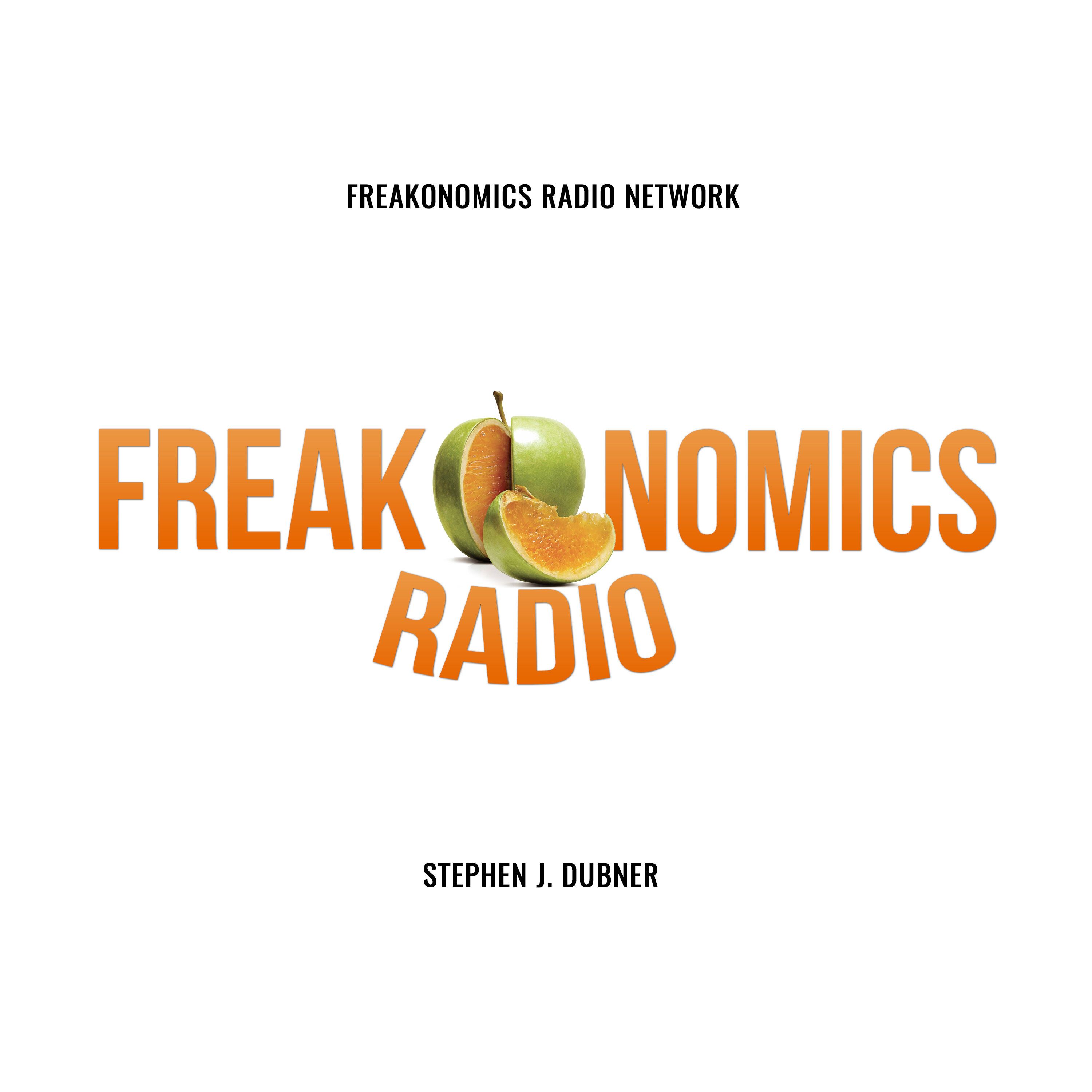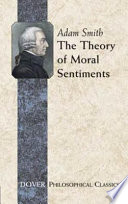📚 3 Books mentioned in "Can Adam Smith Fix Our Economy? | Freakonomics Radio | Episode 527" of Freakonomics Radio

Podcast: Freakonomics Radio
Episode: Can Adam Smith Fix Our Economy? | Freakonomics Radio | Episode 527
Published on January 4, 2023
Here’s a list of all the books mentioned in this episode. Click on the links to watch specific excerpts on YouTube and feel free to purchase the books if they caught your interest!

Sapiens
Buy Sapiens by Yuval Noah Harari on Amazon
I'm not sure it's self-confidence; at least when I wrote Sapiens, I didn't take myself or the project too seriously. I thought, sure, I might make some terrible mistakes, but that's fine.
The speaker reflects on their experience of writing the book 'Sapiens', expressing a light-hearted attitude towards the potential mistakes they could make during the writing process.

The Theory of Moral Sentiments
Buy The Theory of Moral Sentiments by Adam Smith on Amazon
It was in this 17th century building that Smith completed the final editions of his two masterworks: The Theory of Moral Sentiments and, of course, The Wealth of Nations.
During the discussion, the book 'The Theory of Moral Sentiments' was highlighted as one of the two significant works completed by Adam Smith in the building being described.
I know The Wealth of Nations is the most famous book, but for me, as mentioned earlier, it's the Theory of Moral Sentiments that serves as the true guide.
'The Theory of Moral Sentiments' is described as 'the true guide' when compared to the more popular 'The Wealth of Nations'.
While he was able to make meaningful revisions to The Theory of Moral Sentiments and The Wealth of Nations during his time at Panmure, he was also, unfortunately, really busy with his day job.
In this segment, 'The Theory of Moral Sentiments' is discussed, highlighting the revisions made by Adam Smith while he was at Panmure House.
Some people have suggested that, and they've said that if you look at some of the changes made to the very final edition of The Theory of Moral Sentiments after she had passed away, some of the passages might be interpreted as reducing the religious context.
In this segment, the podcast examines The Theory of Moral Sentiments and discusses how certain changes in its final edition may be seen as diminishing its religious undertones.
I'm sure he'd have risen with the sun and done some work on his revisions to The Theory of Moral Sentiments and The Wealth of Nations before he put on his dress coat and wandered up Edinburgh's beautiful Royal Mile.
The mention describes how Adam Smith likely began his day, working on revisions to 'The Theory of Moral Sentiments' and 'The Wealth of Nations', while also painting a picture of his life in Edinburgh.
It's in The Theory of Moral Sentiments, but it's understood in a richer context in The Theory of Moral Sentiments.
The book 'The Theory of Moral Sentiments' is mentioned twice as part of a discussion about its context and understanding, particularly relating to the thoughts of Adam Smith.
She didn't read the first book, The Theory of Moral Sentiments, clearly, but she read the second one and did use that as an authority to promote her economic theories and activities and policies.
In the discussion, it's noted that Margaret Thatcher did not read 'The Theory of Moral Sentiments' but used a different book by Adam Smith as a foundation for her economic theories and policies.

The Wealth of Nations
Buy The Wealth of Nations by Adam Smith on Amazon
So I think the association of Smith with economics has privileged that particular element in his analysis, which is more apparent in The Wealth of Nations.
In this segment, the book 'The Wealth of Nations' is referenced in the context of discussing how Adam Smith's analysis relates to economic theory.
Oh yes, that's another phrase I really love, and to be honest, there are parts of The Wealth of Nations that are mesmerizingly mundane.
During the podcast, a discussion touches upon 'The Wealth of Nations', pointing out that while some sections may seem mundane, they are nonetheless captivating.
They know about The Wealth of Nations and that Margaret Thatcher, the enemy, always had a copy of Wealth of Nations, the legend goes, in her handbag.
The mention refers to the book 'The Wealth of Nations' in the context of a popular belief that Margaret Thatcher always carried a copy in her handbag. This reference contributes to the discussion about public perception regarding Adam Smith.
It was in this 17th century building that Smith completed the final editions of his two masterworks: The Theory of Moral Sentiments and, of course, The Wealth of Nations.
In the context of the discussion, 'The Wealth of Nations' is highlighted as one of the two significant works completed by Adam Smith in a historic 17th-century building.
Writing in The Wealth of Nations, Smith blamed the severity of the famine on the East India Company's improper regulations and injudicious restraints.
In the discussion, it's noted that Adam Smith addresses the famine in 'The Wealth of Nations,' attributing its severity to the East India Company's poor regulations and unwise restrictions.
I'm sure he'd have risen with the sun and done some work on his revisions to The Theory of Moral Sentiments and The Wealth of Nations before he put on his dress coat and wandered up Edinburgh's beautiful Royal Mile.
The mention discusses how Adam Smith likely spent his time revising his works, particularly referring to 'The Wealth of Nations' and 'The Theory of Moral Sentiments', set against the backdrop of Edinburgh's Royal Mile.
At its peak, which was around the mid-18th century when Adam Smith was writing The Wealth of Nations, the East India Company controlled...
The mention references 'The Wealth of Nations,' a significant work by Adam Smith written during the mid-18th century, in the context of its relationship to the East India Company's prominence at that time.
Here is a passage from The Wealth of Nations read by John Ewell: While they were traders only, they managed their trade successfully and were able to pay from their profits a moderate dividend to the proprietors of the stock.
During the episode, John Ewell reads a passage from 'The Wealth of Nations', highlighting how traders managed their trade and provided dividends to stock proprietors.
While he was able to make meaningful revisions to The Theory of Moral Sentiments and The Wealth of Nations during his time at Panmure, he was also, unfortunately, really busy with his day job.
'The Wealth of Nations' is referenced in the context of revisions that Adam Smith was making while working at Panmure House.
I know The Wealth of Nations is the most famous book, but for me, as mentioned earlier, it's the Theory of Moral Sentiments that serves as the true guide.
In this segment, 'The Wealth of Nations' is referenced as the most well-known book by Adam Smith, contrasting it with his other work, 'The Theory of Moral Sentiments', which the speaker considers to be a more genuine guide.
When Adam Smith was writing The Wealth of Nations in the mid-18th century, it wasn't supermarkets he was worried about.
The mention highlights that while Adam Smith was writing 'The Wealth of Nations' in the mid-18th century, his concerns were quite different, not focused on the concept of supermarkets, which serves as a point of contrast in the current discussion.
